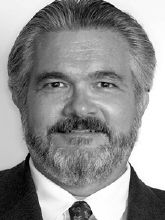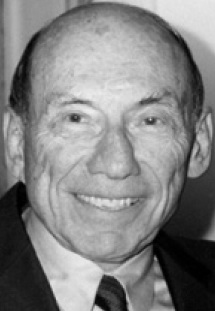It is hard to imagine an orthodontic topic that has generated more controversy or more heated debate than that of extractions. Years ago, when I was practicing general dentistry in a remote corner of the Southwest, I became the de facto oral surgeon in the area. There wasn't a "real" oral surgeon within 200 miles, and the practice that I purchased right out of dental school belonged to an older dentist who had received a substantial amount of surgical training in the service. After a thorough course of on-the- job training in oral surgery, I eventually did practically all of the fractured mandibles, most of the third-molar extractions, and a large portion of the pre-orthodontic extractions in the area.
At the time, there were only two orthodontists in that entire quadrant of the state, and they were the ones who referred patients to me. One of them used a prescription, "Please extract _______ for orthodontic expediency", that bothered me for some time. The phrase "orthodontic expediency" seemed to imply that these extractions were being done for the doctor's benefit and not for the patients'. Eventually, though, I understood that this particular orthodontist was incredibly thoughtful and meticulous in his clinical decision-making; in fact, he may have been the best orthodontic practitioner I ever met. The peculiar phraseology of his extraction prescriptions became irrelevant as I came to realize that his treatment decisions were always made with the patients' best interests in mind, and that any benefit he derived from those decisions was secondary. Of course, any orthodontist who thinks differently has no business treating patients. The difficult part is to determine exactly which treatment procedures would be appropriate in a particular case. Are extractions "for orthodontic expediency" in the patient's best interest?
Similar articles from the archive:
At first glance, this seems to be a simple question. It is a common mistake for beginning orthodontic graduate students to assume that space considerations--"not enough space to get all of the teeth in"--are the only factors involved in the extraction decision. Actually, the issue is confusingly multifactorial. Arch length is undoubtedly important, but many other considerations come into play, including the profile, the soft tissue, the health of the TMJ and the periodontium, and the overall growth pattern. There is no single best answer that holds in all cases. The only correct answer is this: Sometimes orthodontic extractions are in the patient's best interest, and sometimes they are not. It is absolutely wrong to say that teeth should never be extracted for orthodontic indications. It is absolutely wrong to say that teeth should be extracted in every case. It is up to the treating doctor to make this decision on a case-by-case basis.
The orthodontist's best clinical judgment, forged from extensive training at the hands of highly skilled senior clinicians and professors and honed through years of reflective practice and personal experience, will inform the extraction decision. Mastery of the worldwide body of orthodontic literature must be an integral part of a doctor's initial training and continuing professional development, because that literature represents the best available evidence for a skilled and conscientious practitioner to utilize in developing treatment plans with the patients' best interests in mind. Hundreds of studies have been published on orthodontic extractions--so many that it is practically impossible for even the most fastidious among us to have thoughtfully read and evaluated every peer-reviewed paper on the subject. Recent developments such as air-rotor stripping and skeletal anchorage have made the decision even more complex.
In this and the following issue of JCO, a group of gifted authors--Daniel J. Rinchuse, Lauren Sigler Busch, Daniel DiBagno, and Mauro Cozzani--present a comprehensive Overview of the extraction debate as it has been argued over the years in the orthodontic literature. This review should be of considerable benefit to every one of us in deciding whether to extract or not to extract in any particular case. The extensive citations provided by the authors will give anyone who wants to pursue this issue a wonderful starting point.
RGK
Dr. Warren Hamula, 1928-2014, Dr. James Economides, 1935-2014
It is with great sorrow that I have learned of the recent passing of Warren Hamula and James Economides. Both Warren and Jim were not only outstanding orthodontists, but also outstanding athletes at a national level--Warren in basketball and baseball, Jim in baseball and handball. Both developed successful businesses related to orthodontics, both were related to JCO, and both were friends of mine for a great many years. I made numerous visits to both their offices.
Warren was always fun to be with--as an example of his pixie nature, he had a parrot in his office that would continually say, "Birds can't talk". With his Colorado Springs practice, he pioneered the idea of locating in a shopping center. Of course, he was a huge success in designing orthodontic offices, publishing some 50 articles in JCO on the subject of office design. He retired from our editorial board only a few months ago after serving in that capacity for 37 years.
Jim was among the first to envision the computerization of orthodontic practice, as published in the early days of JCO. His company, Analog/Digital Services, began by translating orthodontic data from analog to digital and later branched out to more general uses. In fact, he set up JCO's conversion to computers well before PCs became commonplace. Jim applied that same expertise to computerizing his own practice records; when he retired from practice, he donated those records to his alma mater, the University of New Mexico, for others to study and learn his meticulous treatment methods.
ELG



